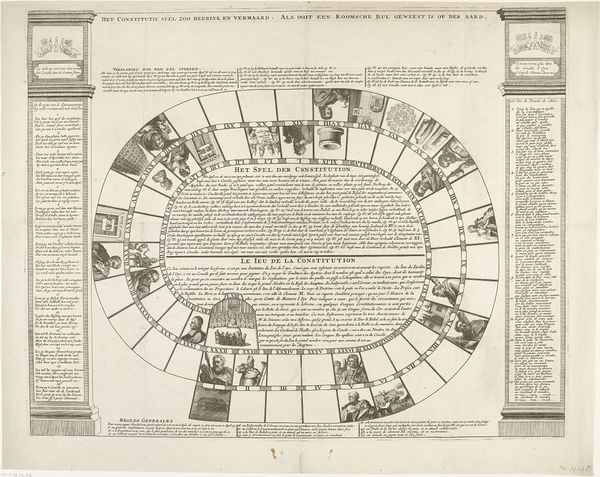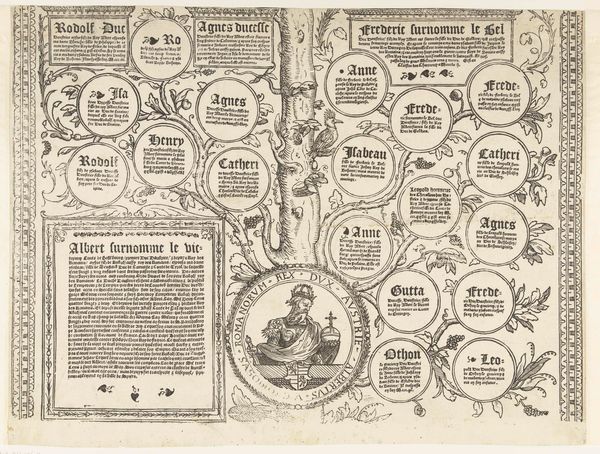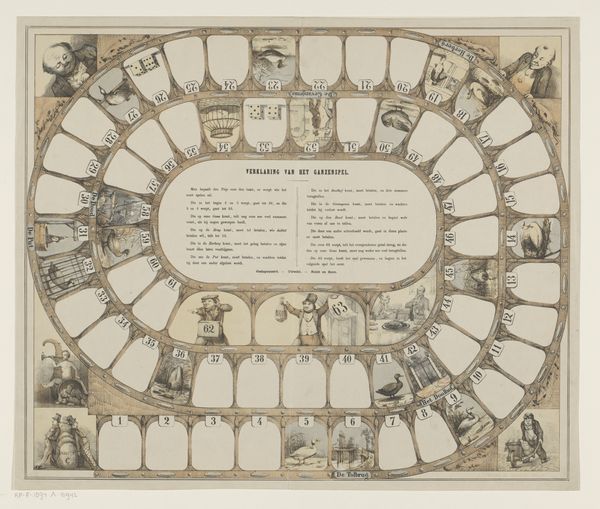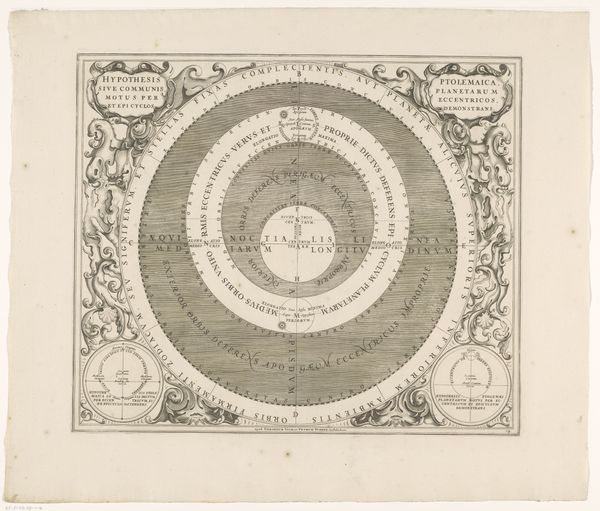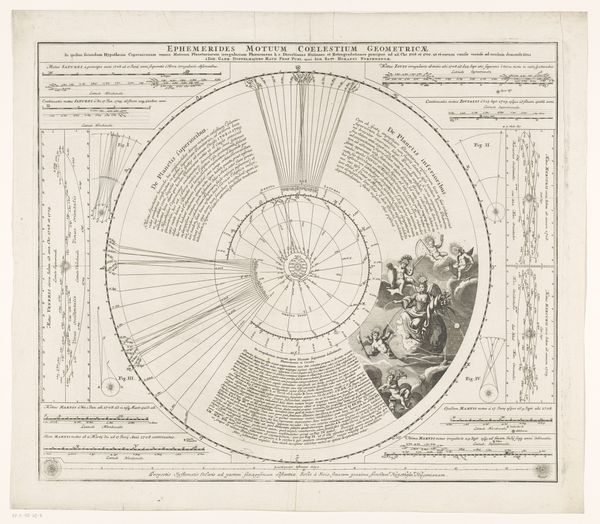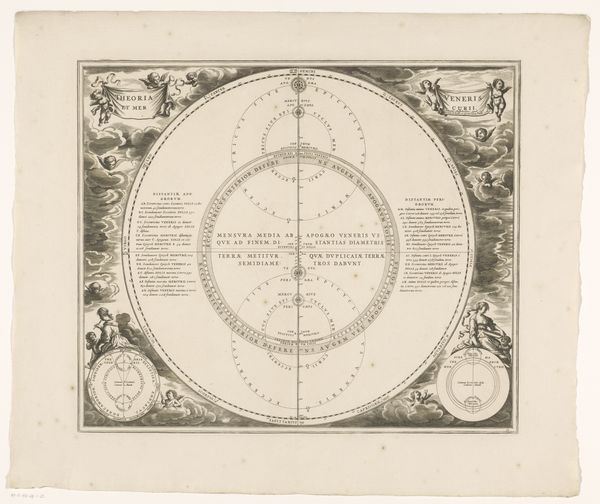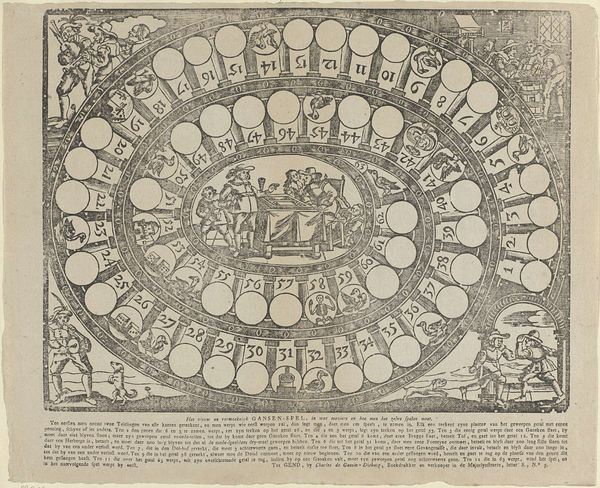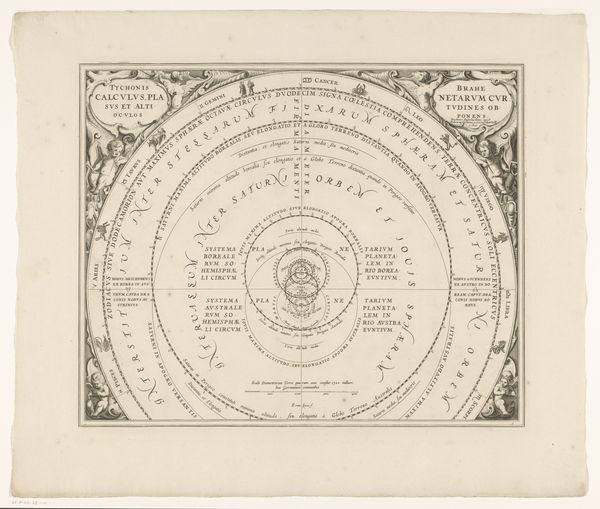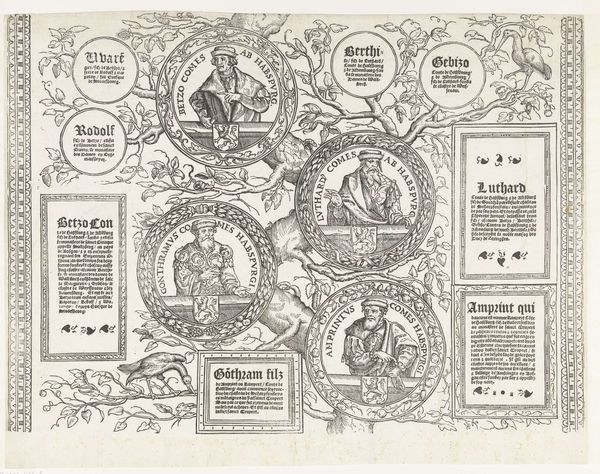
Ganzenbord der Constitutie Unigenitus van paus Clemens XI, ca. 1723-1724 1724
0:00
0:00
print, engraving
#
baroque
#
dutch-golden-age
# print
#
figuration
#
text
#
line
#
engraving
Dimensions: height 460 mm, width 585 mm
Copyright: Rijks Museum: Open Domain
Editor: Here we have "Ganzenbord der Constitutie Unigenitus van paus Clemens XI," dating back to around 1723-1724, created by an anonymous artist. It’s an engraving printed on paper, housed at the Rijksmuseum. It’s overwhelmingly textual at first glance, almost like an elaborate game board. What do you see in this piece? Curator: What strikes me is the level of textual information embedded within the visual framework. Look at the paper itself: the raw material, and the conscious labor behind producing and distributing such printed material. It reflects not just artistry, but the mechanics of social discourse during that period. The physical labor involved, from papermaking to printing, highlights a certain social dynamic that is often overlooked in art history, wouldn’t you agree? Editor: That’s interesting. It’s easy to forget the sheer labor involved in pre-industrial printing. What purpose might these "mechanics of social discourse" have served? Curator: Well, examining the process reveals that these aren't just aesthetic decisions, but rather strategic maneuvers intended to circulate certain viewpoints within a very specific audience. Who was consuming this, and under what material conditions were they doing so? The piece can only have functioned within specific conditions of accessibility. Can we assume, given its complexity and use of language, that the working classes would have had the means or, frankly, the inclination to access the discourse being conducted through such an object? Editor: So, it’s not simply about the artistic skill involved in the engraving, but also about how the materials and their accessibility shape who gets to participate in the conversation. Curator: Precisely! By considering the means of production and distribution, we gain a clearer picture of the social forces at play and challenge the idea of a singular, objective art-historical narrative. It encourages a conversation around materiality. It pushes us to acknowledge that artworks, especially prints like this, are more than aesthetic objects: they are material products embedded in complex systems of production and consumption, isn't it fascinating? Editor: Absolutely. Thinking about it that way really opens up a whole new perspective! Thanks.
Comments
No comments
Be the first to comment and join the conversation on the ultimate creative platform.
